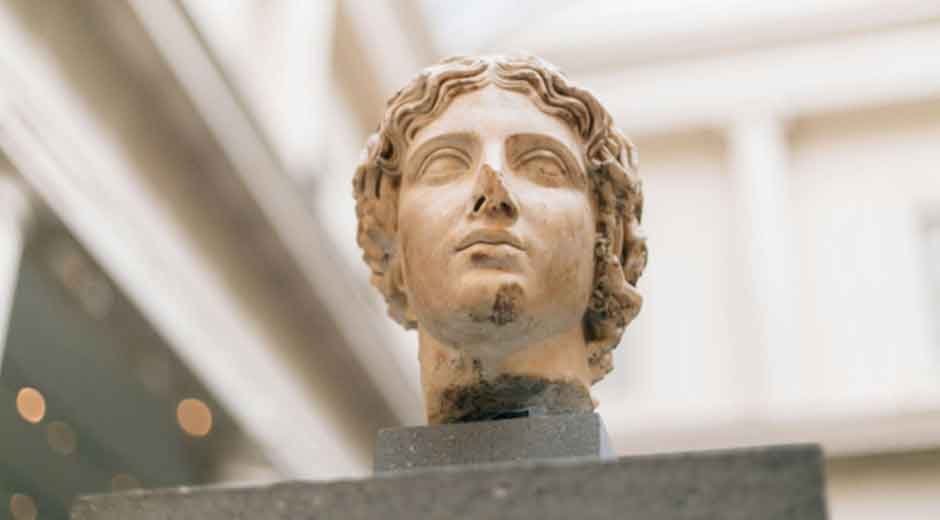- Moving fine art in NYC requires specialized expertise due to the city’s logistical challenges and the delicate nature of the pieces.
- Professional art handlers provide custom packing, climate-controlled transport, and thorough documentation to protect artwork at every stage.
- The right team can navigate NYC’s building restrictions, traffic, and permit requirements without added stress for the collector or artist.
- Unpacking, reinstallation, and environmental care are essential steps after the move to ensure the longevity and safety of the artwork.
Moving day is never easy, but when you’re driving an irreplaceable sculpture or a delicate installation, the stakes get a lot higher. Relocating fine art in a city like New York isn’t just about packing and transporting—it’s about precision, timing, and trusting people who know how to treat art like art, not just cargo. The city presents numerous challenges, including crowded streets, tight freight elevators, and unpredictable weather.
But here’s the good news: relocating artwork doesn’t have to be a nerve-wracking experience. With the right plan and team, you can confidently move even the most intricate or fragile pieces. This guide will walk you through the essentials of fine art relocation—from understanding what makes it so different to knowing who you can rely on to do the job properly in NYC.
Why Fine Art Relocation Requires a Specialized Approach
Not all moves are created equal—and that’s especially true when your cargo is a five-foot bronze sculpture or a series of mixed-media canvases. Fine art isn’t just heavy or awkward to carry. It’s often one-of-a-kind, high in value (both financial and emotional), and highly sensitive to temperature, vibration, and even minor handling mistakes.
No matter how reputable, general moving companies are rarely equipped with the knowledge or tools to handle this fragility. Standard packing materials might not offer the proper support, and even minor lapses in care, like setting a sculpture down the wrong way or leaving it in an unregulated truck, can cause damage that’s impossible to reverse.
There are real-world horror stories: sculptures chipped during transport, paintings warped due to heat exposure, and valuable pieces lost in unmarked crates. The costs of these mistakes aren’t just monetary—they’re irreplaceable moments of artistry that can never truly be restored.
That’s why it matters so much to work with professionals who specialize in art logistics. These experts understand the unique demands of moving fine art and come prepared with everything from custom-built crates to climate-controlled transport and specialized insurance. For them, every move is treated with museum-level care, precisely the attention your collection deserves.
How to Choose the Right Team for the Job
The number of moving companies in a city like New York is overwhelming. But when it comes to fine art, you’re not just looking for someone with a truck—you’re looking for a partner who speaks the language of preservation and presentation. That means finding a crew that knows the difference between moving a couch and relocating a century-old marble bust.
So, what makes a team truly qualified? Look for credentials that matter in the art world. That could include experience with galleries, museums, or auction houses and access to specialized tools like padded crates, climate-controlled vans, or white glove services. Trustworthy art handlers will always perform a pre-move assessment, talk you through their process, and collaborate with you on a sensible timeline.
Reputation counts, too. Many of the top professionals in this space operate on referrals and long-standing relationships with curators, collectors, and artists. That level of trust is hard-earned and worth seeking out when your artwork is on the line.
New York is one of the world’s cultural capitals, which comes with the benefit of a robust local network. Whether moving a single piece or relocating an entire collection, you can find movers for fine art in New York that ensure peace of mind that few generic movers can offer.
Prepping Your Artwork Before the Move
Before any artwork gets loaded onto a truck—or even packed into a crate—the prep work must be done correctly. It’s not just about wrapping things in bubble wrap and hoping for the best. Professional-grade art relocation begins with documentation and condition reporting. Think of this as the artwork’s “before” snapshot. It’s your record and protects both you and the handlers if anything were to happen in transit.
Next comes the packing strategy, which is rarely one-size-fits-all. Sculptures in particular need custom crating, often with internal supports to keep them suspended and stabilized during the move. Bronze, stone, and mixed-media pieces might react differently to pressure, moisture, or temperature changes, so materials like acid-free foam, archival wrapping, and climate-sensitive barriers become critical.
This is also where a great team makes a huge difference. Expert art handlers will walk you through the packing process, often fabricating crates on-site or using advanced tools to assess what’s safest for each piece. Custom fitting is a must, not a luxury, if your artwork includes fragile extensions, sharp edges, or complex shapes.
And don’t skip labeling. Every piece should be marked (but discreetly) with orientation instructions, handling notes, and destination details. In the art world, small, careful touches keep valuable works safe from unnecessary risk.
Navigating NYC Logistics Without Losing Your Mind
If you’ve ever tried to move anything large in New York City, you already know it’s not like anywhere else. Between loading dock permits, restricted delivery hours, and apartment buildings with freight elevator reservations, the logistics can feel like a puzzle, and not fun.
Art relocations come with their extra challenges. You should block off a section of a busy street for safe loading, coordinate with co-op boards that want every move done by 3 p.m., or arrange access to buildings without elevators. Then there’s the parking. And the traffic. And the weather.
That’s why top art handlers in NYC don’t just show up with a van—they show up with a plan. They know the neighborhoods, understand how to negotiate with building managers, and often secure the necessary permits before you even ask. They also schedule moves during less hectic times to minimize disruption (and risk), and they’re masters at keeping things smooth even when the environment isn’t.
If your artwork needs to go up six flights of stairs or through a narrow hallway in a historic brownstone, they’ll already have measured it, tested the angles, and brought the tools to make it happen safely.
When dealing with valuable art in an unpredictable city, professional logistics aren’t just a bonus—they’re non-negotiable.
After the Move – Reinstallation and Ongoing Care
Once your art has arrived at its new home, the job isn’t quite done. In fact, this last phase—unpacking, reinstallation, and aftercare—is just as important as the move itself.
The best art handlers don’t just drop things off and disappear. They’ll assist with unpacking, carefully removing each piece from its crate and checking for any signs of shifting or damage. A fresh condition report is usually created at this stage, documenting how each piece arrived and ensuring nothing slipped through the cracks during transit.
Reinstallation is its kind of art. Sculptures may need pedestals, security anchoring, or suspension from ceilings. Proper placement also considers light, temperature, and room flow. Many handlers work directly with designers or curators to reinstall work precisely how it was, or better.
Then comes ongoing care. Climate control becomes an essential consideration if you’re moving pieces into a gallery, home, or institution. NYC’s humidity and seasonal temperature swings can take a toll on certain materials, so you may want to explore environmental monitoring solutions or storage facilities equipped to handle museum-grade requirements.
Finally, don’t forget to update your insurance. It’s smart to revisit your coverage after a move, especially if values have changed or if the work is being displayed differently. Your art collection deserves that level of attention.
Conclusion: Turning a Stressful Process into a Smooth Experience
Relocating fine art in New York City can seem overwhelming, but with the right team and approach, it doesn’t have to be. What starts as a daunting task can become a seamless experience when you surround yourself with people who understand both the value of your pieces and the city’s quirks.
Whether moving one sculpture or a full collection, planning early, asking the right questions, and working with specialists ensures your art gets the respect and protection it deserves. In the end, moving art isn’t just about logistics but preservation, trust, and care.










